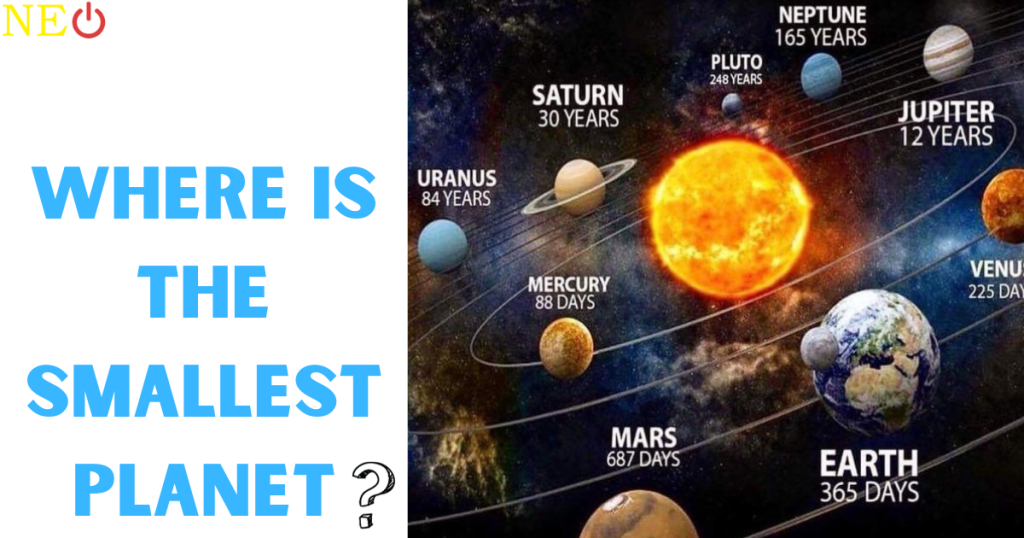The smallest planet in our solar system is Mercury. it holds a special place among the celestial bodies that orbit the Sun. This miniature world is not only fascinating in its own right but also plays a significant role in our understanding of planetary science and the history of our solar system.
Mercury's Size and Composition:
Mercury is a rocky, terrestrial planet, similar to Earth in many ways but significantly smaller. It has a diameter of approximately 4,880 km. (3,032 miles), making it just a little larger than Earth's Moon. In terms of mass, Mercury is much less substantial than Earth, with a mere 5.5% of Earth's mass.
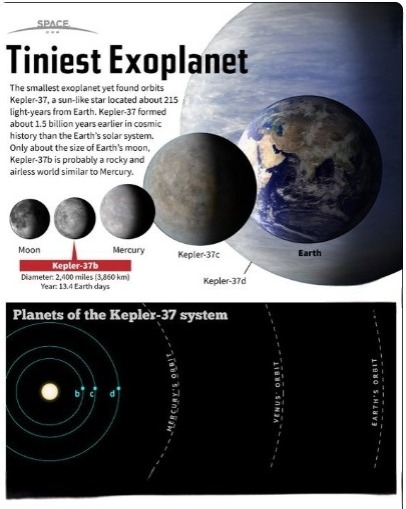
Due to its relatively small size, Mercury lacks an atmosphere capable of retaining gases for an extended period. Consequently, its surface experiences extreme temperature variations, from scorching hot to bitterly cold. During its daytime, surface temperatures can reach up to 430 degrees Celsius (800 degrees Fahrenheit), hot enough to melt lead. However, in the absence of a substantial atmosphere, Mercury's nighttime temperatures plummet to around -180 degrees Celsius (-290 degrees Fahrenheit). These extreme temperature swings are some of the most severe in the solar system.
Surface Features:
Mercury's surface is heavily cratered and resembles the Moon's in many ways. These craters are a result of the planet's long history of being bombarded by space debris. The largest of these impact basins is the Caloris Basin, which stretches approximately 1,550 km. (960 miles) in diameter. It is a prominent feature on Mercury's surface and provides valuable insights into the planet's geological history.

Mercury also possesses vast plains and scarps (cliffs) that are believed to have formed as the planet's interior cooled and contracted, causing its crust to fracture and deform. One of the most notable features of Mercury is the Kuiper crater, which has an extensive system of radial troughs or "rilles" extending from it. These rilles are thought to have formed due to the contraction of Mercury's crust.
Lack of Atmosphere:
One of the most striking characteristics of Mercury is its almost complete lack of an atmosphere. Unlike Earth, which has a robust atmosphere composed mainly of nitrogen and oxygen, Mercury's tenuous exosphere consists primarily of trace amounts of helium, hydrogen, and small quantities of other gases. This lack of atmosphere means there is no protection against the harsh solar radiation and impacts from space debris.
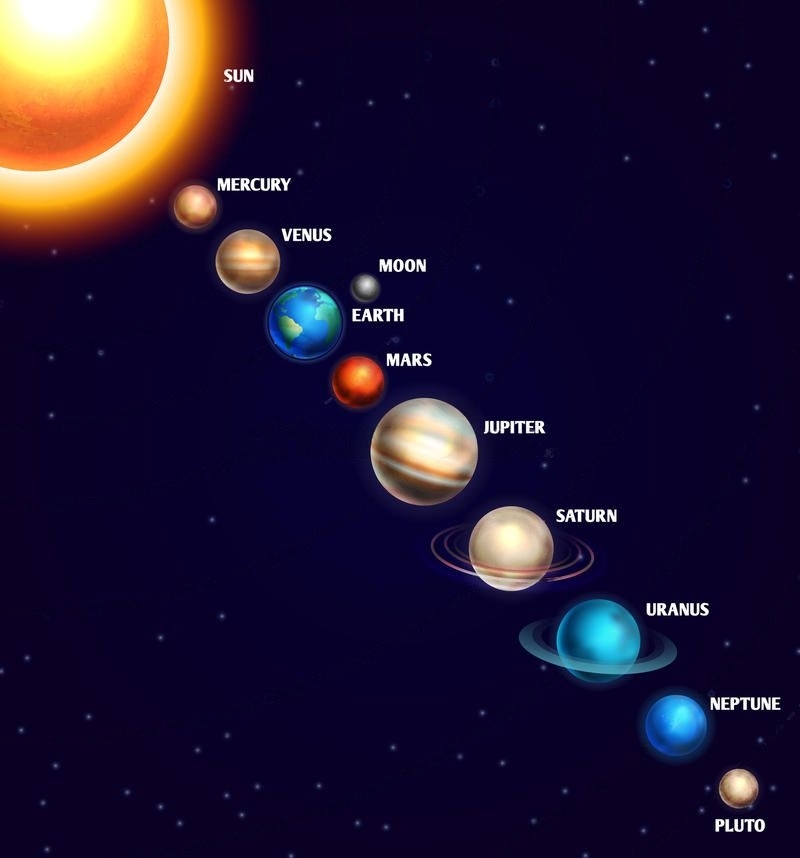
The absence of a significant atmosphere also results in another unusual phenomenon on Mercury: the lack of weather. Earth experiences a dynamic climate with changing weather patterns, but Mercury's environment remains unaltered by meteorological processes. This sterile environment provides scientists with a unique opportunity to study the processes and conditions that prevail on a planet devoid of weather-related disturbances.
Mercury's Orbital Characteristics:
Mercury's unique relationship with the Sun is another captivating aspect of this planet. It has an extremely Its orbit is elliptical, which causes it to vary greatly in proximity to the Sun over time. Perihelion, when it makes its closest approach to the Sun, Mercury is approximately 77 million km. (48 million miles) away. At the same time, at its farthest point (aphelion), it can be as distant as 91 million km. (57 million miles).
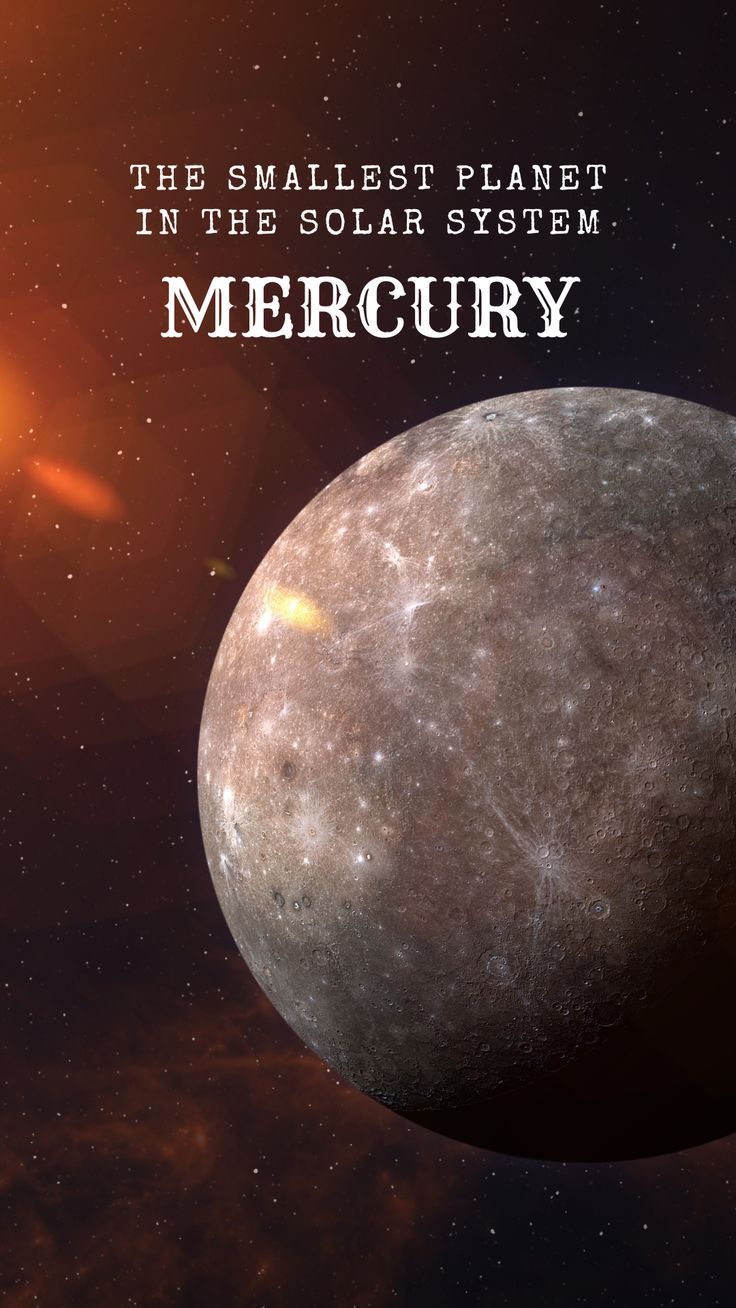
Mercury's orbital eccentricity results in its peculiar rotation characteristics. Unlike most planets, Mercury has a a 3:2 spin-orbit resonance, which means it revolves around the number three. times for every two orbits around the Sun. This results in a day on Mercury lasting approximately 59 Earth days, while its year, or the time it takes to orbit the Sun, is about 88 Earth days.
Historical Significance:
Mercury has been a subject of fascination for astronomers throughout history. Its name is derived from the Roman god Mercury, the messenger of the gods, and it was known to ancient civilizations, including the Greeks and Egyptians. In ancient times, it was often mistaken for two separate celestial objects: one visible in the morning and one in the evening.

Galileo Galilei, an Italian astronomer, was active in the early 17th century. observed Mercury through a telescope and recorded its changing phases, similar to those of the Moon. This observation provided strong evidence against the geocentric model of the universe, which held that all celestial bodies orbited the Earth. Galileo's findings supported the heliocentric model, proposed by Nicolaus Copernicus, which asserted that planets, including Mercury, orbit the Sun.
NASA's Exploration of Mercury:
Our understanding of Mercury has been significantly enhanced by space exploration. NASA's Mariner 10 spacecraft was the first to visit Mercury in the mid-1970s. It conducted three flybys, allowing scientists to obtain close-up images and valuable data about the planet's surface and environment.
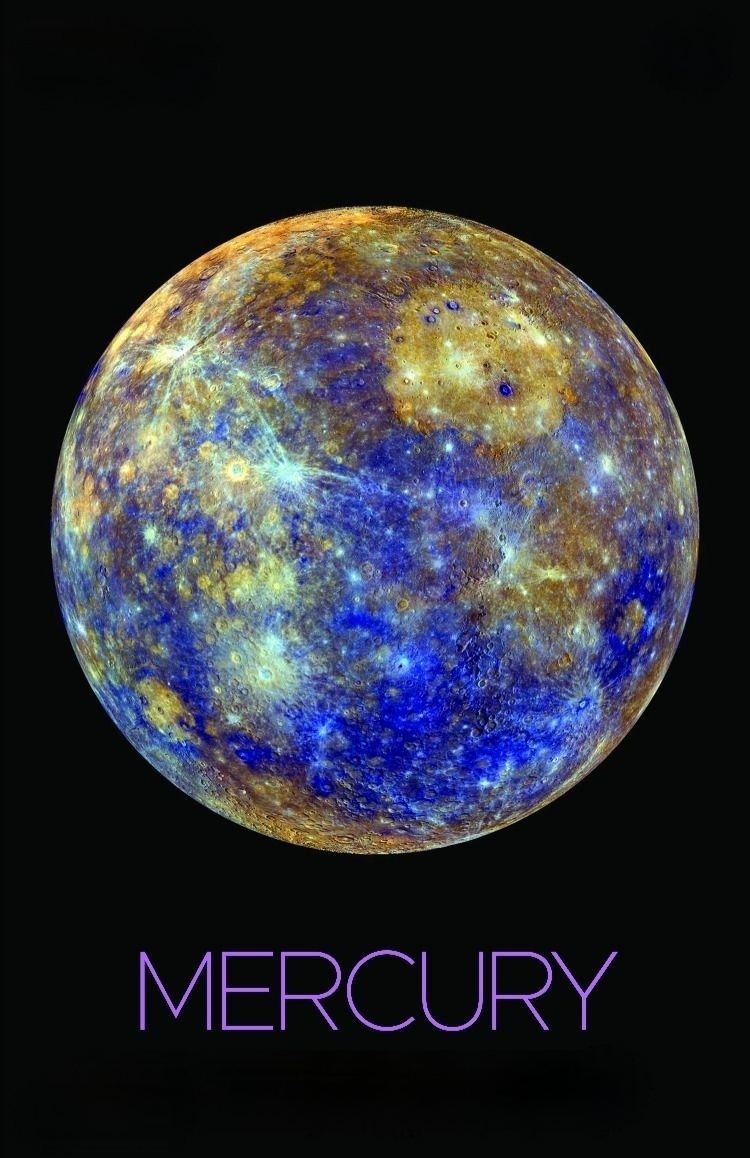
More recently, NASA's MESSENGER (Mercury Surface, Space Environment, Geochemistry, and Ranging) spacecraft, launched in 2004,made history by being the first spaceship to circle Mercury. in 2011. MESSENGER's mission provided a wealth of information about the planet's geology, magnetosphere, and surface composition. The spacecraft operated until 2015, and its findings continue to shape our understanding of this intriguing world.
In Conclusion:
The smallest planet in our solar system, Mercury, is a captivating celestial body with unique characteristics and a rich history of observation and exploration. Its tiny size, extreme surface conditions, lack of atmosphere, and unusual spin-orbit resonance make it a subject of great interest to planetary scientists and astronomers. As our knowledge of Mercury continues to grow, it not only enhances our understanding of our solar system's formation and evolution but also provides valuable insights into the broader field of planetary science.


